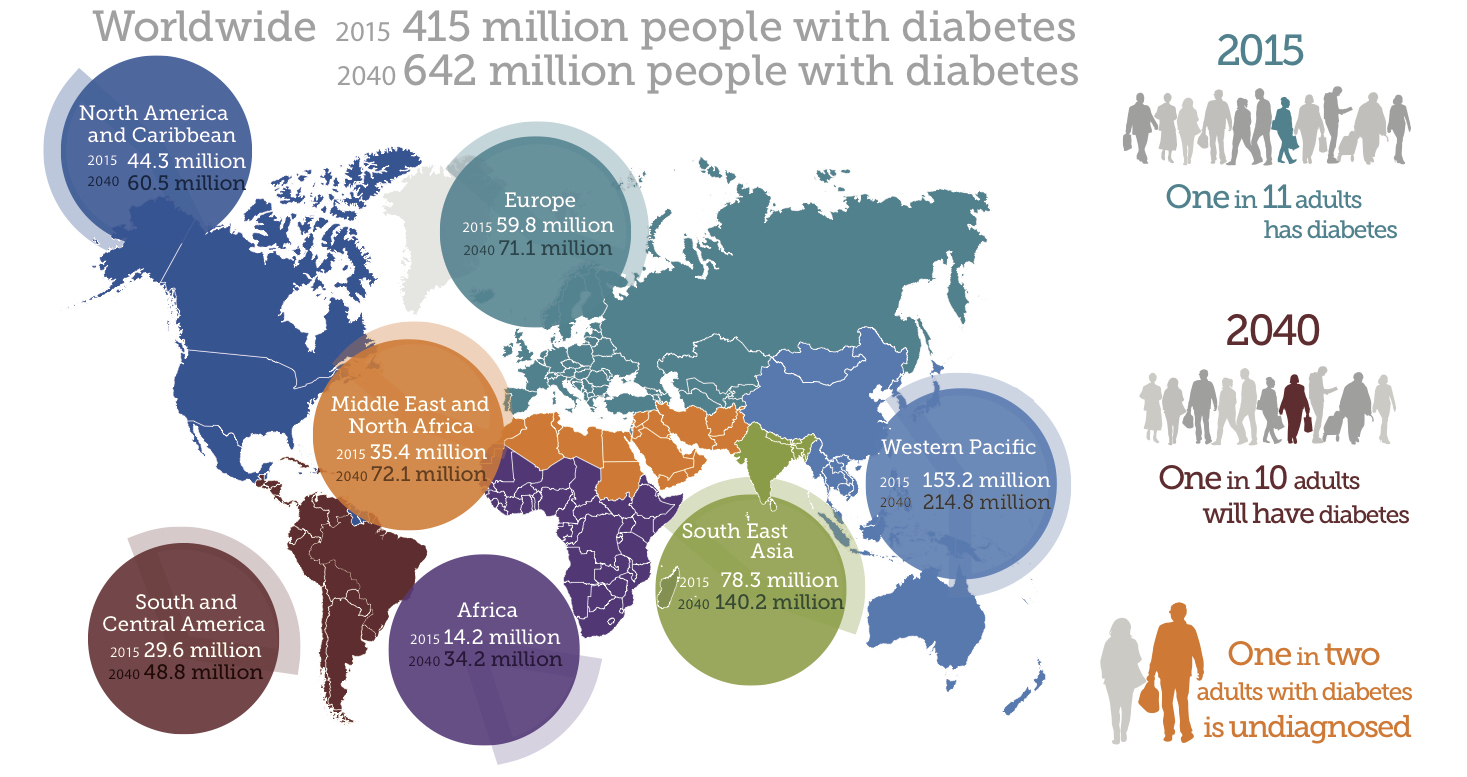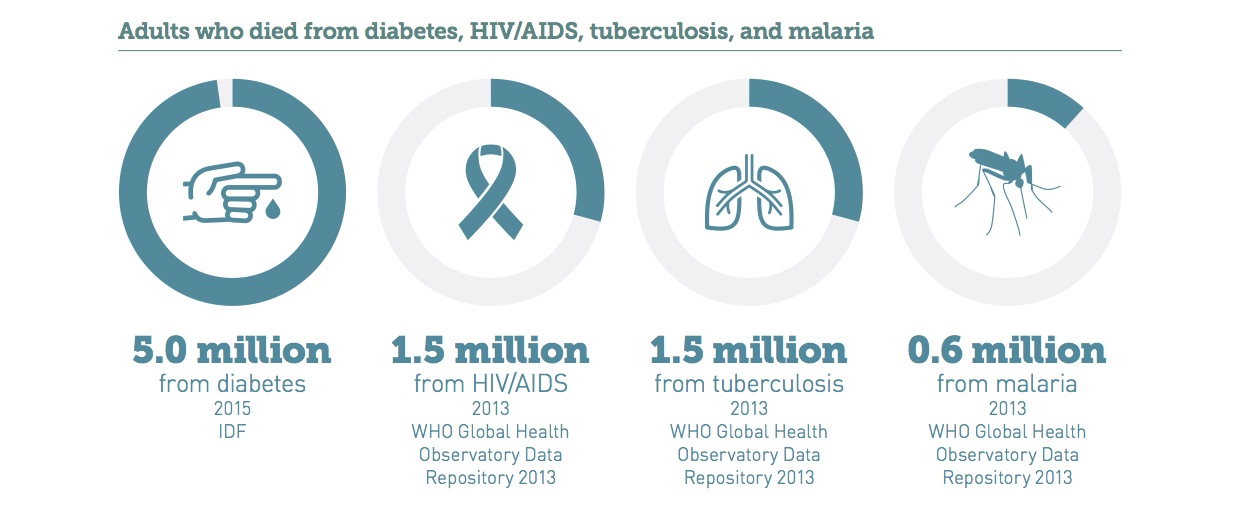Diabetes has been a global health issue for the past two decades and the situation has only deteriorated with the latest reports from the Imperial College of London, the Harvard T.H. Chan School of Public Health, The World Health Organization as well as the International Diabetes Federation calling for a global emergency. Over 415 million people suffer from Diabetes in the world, a significant increase from the 108 million in 1980. This still pales in comparison to the 2040 estimates soaring over the 640 million mark.
 Source: International Diabetes Federation
Source: International Diabetes Federation
Diabetes Mellitus is a group of metabolic diseases caused by a prolonged period of high blood sugar (Glucose) levels. Commonly known simply as diabetes, the excessive blood sugar levels can be caused by the insufficient production of insulin (determined as Type 1) or the inability of the body to respond to it (Type 2). There is a third form of this condition called gestational, which develops only during pregnancy. Type two diabetes represents 90% of all diabetes patiences across the world. Five million people died from diabetes in 2015, which is astonishing compared to the 1.5 million from Tuberculosis, the 1.1 million deaths from HIV and the .44 million who perished due to Malaria.
 Source: WHO / International Diabetes Federation
Source: WHO / International Diabetes Federation
This disease is not only an everyday health challenge, but a financial one as well. The estimated global cost for diabetes is $825 billion international dollars annually. This represents roughly 12% of the healthcare expenditure across the world. The expected increase in diabetes patients over the next decades is expected to be steeper in developing, low to middle income countries, where diagnosis and treatment is less accessible. The diabetes prevalence in Latin America, for instance, is expected to grow 65% over the next couple of decades. It is estimated that one out of two adults with diabetes is left undiagnosed. While healthy diets and exercise are fundamental for managing the disease, medication, which is often expensive and hard to come by in rural and marginalized areas, is commonly needed to help keep blood sugar levels low and prevent the more damaging outcomes.
 Source: International Diabetes Federation
Source: International Diabetes Federation
Hyperglycemia, the excess glucose in the bloodstream is what causes the worst long-term complications and consequences of the disease. Varying from weakness, numbing, tingling and muscle pain to more serious consequences like damage to blood vessels, kidney failure, blindness, lower limb ulcers and amputations and eventually death. Peer reviewed research across the globe is focussing on natural options in the quest for alternatives which have less side effects and lower costs.
 Source: International Diabetes Federation
Source: International Diabetes Federation
The Neem Tree has several compounds that have been studied to understand its ability lower blood glucose levels, including nimbidol with its broad-spectrum inhibition of carbohydrates into glucose and 3-Deacetyl-3-cinnamoyl-azadirachtin, which binds into a molecule (PEPCK) that produces glucose from protein (glycogenesis). The bark and particularly the flowers have demonstrated extremely efficient hypoglycemic (glucose lowering) effects. Other positive effects have been highlighted like β-cell regeneration improved pancreas islet morphology and oxidative status as well as liver protection from diabetes-induced damage.
The need for economically accessible, and widely available medication for Diabetes is imperative. Understanding, not only to the functionality of neem compounds in the body, but fulfilling the potential to develop low cost medications to reduce high blood sugar levels and the impairing consequences on diabetic patients is a promising path to facing this formidable challenge.
Please find below the sources of this fascinating research in case you wish to delve deeper.
- Worldwide trends in diabetes since 1980: a pooled analysis of 751 population-based studies with 4·4 million participants. The Lancet , Volume 387 , Issue 10027 , 1513 – 1530
- International Diabetes Federation Diabetes Atlas – 7th edition http://www.diabetesatlas.org
- Rajesh Kumar Pandey, S. N. Singh, Kashif Shahnawaz. Comparative Study of Aegle Marmelos, Azadirachta Indica and Glimepride on Blood Sugar in Experimentally Induced Hyperglycemia in Albino Rats. Journal of Evolution of Medical and Dental Sciences 2015; Vol. 4, Issue 22, March16; Page: 3815-3822, DOI:10.14260/jemds/2015/549
- Akinola, Oluwole B, Caxton-Martins, Ezekiel A, & Dini, Luciana. (2010). Chronic Treatment with Ethanolic Extract of the Leavesof Azadirachta indica Ameliorates Lesions of Pancreatic Islets in Streptozotocin Diabetes. International Journal of Morphology, 28(1), 291-302. https://dx.doi.org/10.4067/S0717-95022010000100043